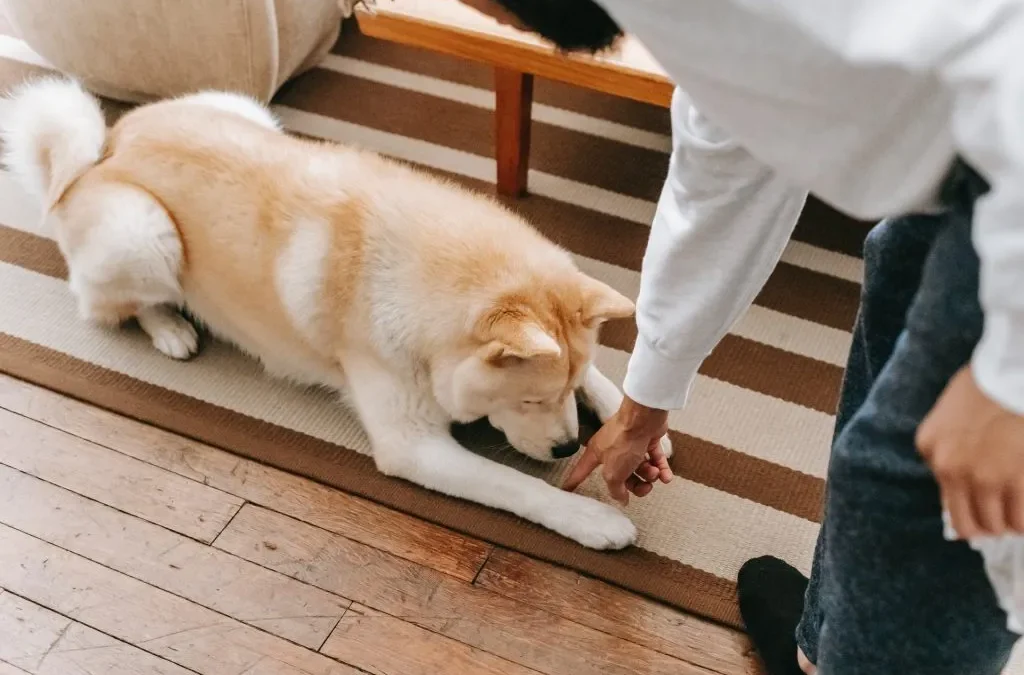Training a dog isn’t just about teaching tricks—it’s about building a strong bond and understanding each other better. I’ve learned that the right approach can turn even the most stubborn pup into a well-mannered companion. It all starts with a few key principles that set the stage for success.
I know how overwhelming it feels to sift through endless advice online. That’s why I always stick to a handful of tried-and-true rules that make training easier and more rewarding for both me and my dog. When I follow these golden rules, I see real progress and a happier, more confident pet by my side.
Understanding the Importance of Training Your Dog
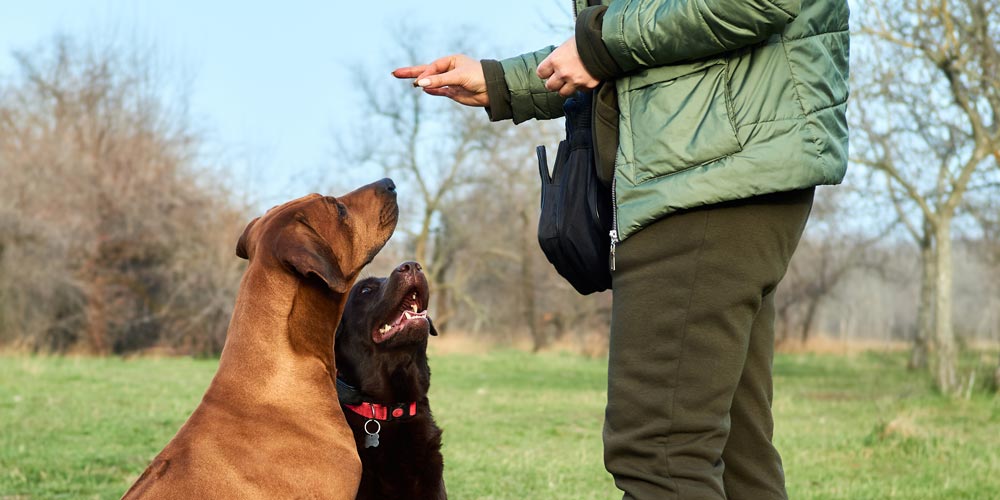
Understanding-the-Importance-of-Training-Your-Dog
Effective dog training shapes my dog’s behavior, strengthens our bond, and builds mutual trust. Consistent guidance reduces confusion, preventing anxiety and unwanted habits. Frequent training sessions create clear communication, helping my dog understand what’s expected and making interactions smoother in daily routines.
Vet-approved studies confirm trained dogs display lower aggression and higher adaptability. Proper training leads to dogs responding reliably to commands, following house rules, and enjoying greater freedom. Highly trained dogs adapt faster to changes, such as moving homes or meeting new people.
Socialization forms a core component. I expose my dog to varied environments, ensuring he gets comfortable with other pets, strangers, and unfamiliar sounds. Positive exposure during early training correlates with reduced reactivity and improved temperament, based on American Veterinary Society of Animal Behavior recommendations.
Training protects both my dog and the people around him. Obedient responses in critical situations—such as stopping at roads or ignoring distractions—decrease accident risks. Research by the American Pet Products Association highlights that well-trained dogs are less likely to be surrendered to shelters.
Dog Training Benefits Table
| Benefit | Impact Example | Supporting Authority |
|---|---|---|
| Enhanced Communication | Reliable responses to commands | American Kennel Club |
| Lower Aggression & Reactivity | Calm interactions with strangers | American Veterinary Society of Animal Behavior |
| Increased Adaptability | Stress-free adaptation to change | Journal of Veterinary Behavior |
| Greater Safety | Reduced accident risk | American Pet Products Association |
| Improved Social Interaction | Peaceful outings in public | Association of Professional Dog Trainers |
Common Training Goals Table
| Training Goal | Typical Outcome Example |
|---|---|
| Housebreaking | No accidents indoors |
| Recall Command | Immediate return when called |
| Leash Walking | Controlled walks without pulling |
| Sit & Stay | Remaining still until released |
| Socialization | Friendly play with unfamiliar dogs |
Overview of the 5 Golden Rules of Dog Training
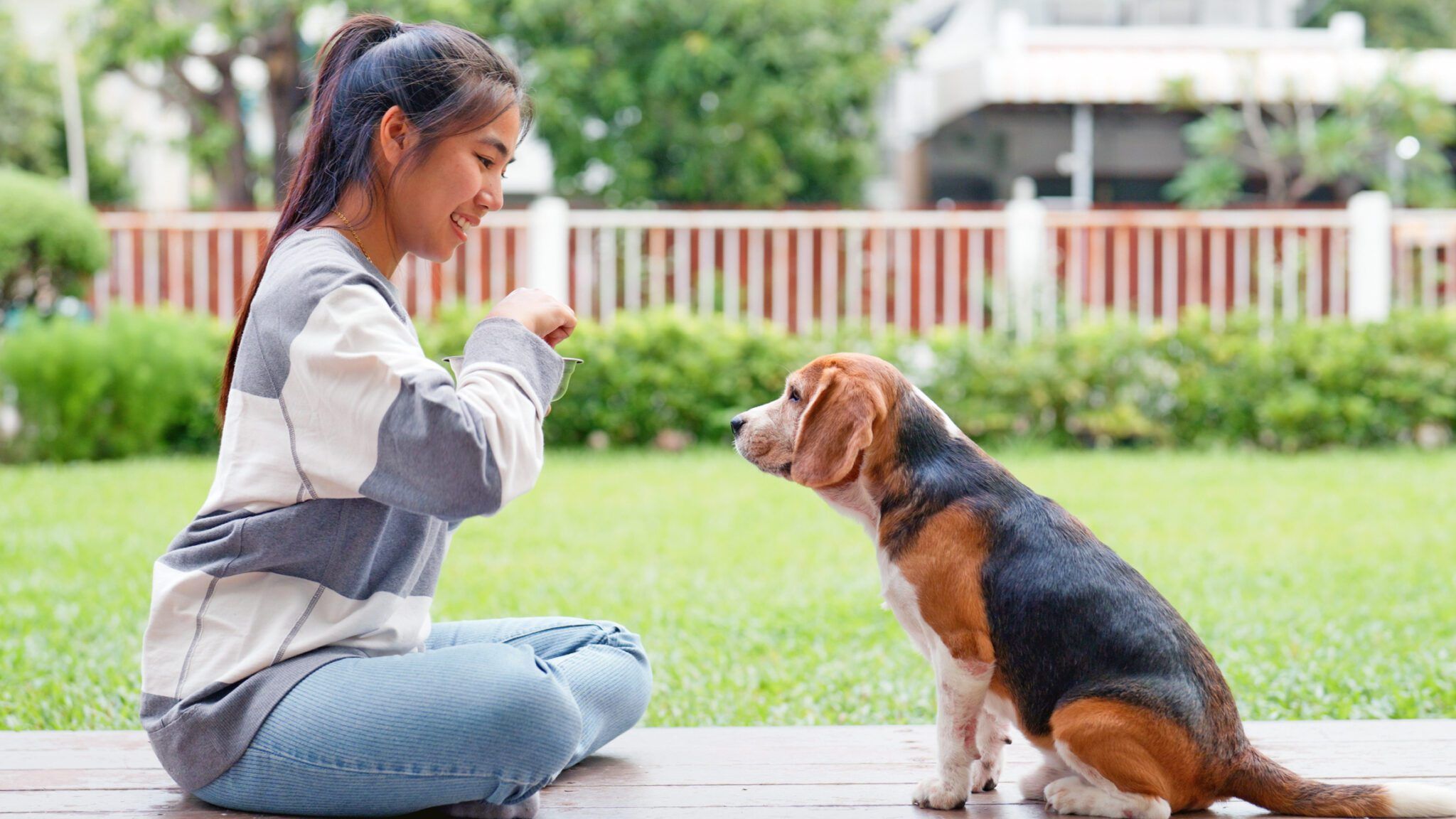
Overview-of-the-5-Golden-Rules-of-Dog-Training
Dog training relies on foundational principles for reliable results and clear communication between me and my dog. Two main frameworks inform the 5 Golden Rules concept: behavior modification through positive reinforcement, and leadership-based training for reducing unwanted behavior. These rules provide structure and consistency, contributing to faster learning and lasting habits.
Key Principles of the 5 Golden Rules
- Planning: I define target behaviors and break them into manageable steps for smoother learning progression.
- Contingency: I reinforce good behaviors immediately after marking them, ensuring my dog links actions with rewards.
- Parsimony: I use only the minimal necessary reward to maintain behaviors—avoiding over-rewarding keeps results consistent.
- Necessity: I reinforce only essential behaviors, focusing my dog’s efforts for efficient training sessions.
- Distribution: I space out reinforcements, building persistence and helping my dog generalize behaviors across different situations.
Leadership-Based 5 Golden Rules
- Controlling food: I decide meal times and treat access, which signals my leadership to my dog.
- Managing affection and attention: I control the timing of affection to establish behavioral boundaries.
- Showing I handle danger: I demonstrate calm control during unexpected events, boosting my dog’s trust.
- Setting my terms: I ensure my dog follows established house rules consistently.
- Leading the walk: I guide walks, reinforcing that I set the pace and direction.
Core Concepts Reinforced by Research
Dog training effectiveness correlates with consistent timing and reinforcement. Immediate feedback, clear commands, and steady routines result in improved obedience and better adaptation to household standards.
Table 1: Comparison of the Two Main Frameworks
| Principle | Positive Reinforcement Rules (MSU) | Leadership-Based Rules (Doggy Dan) |
|---|---|---|
| Planning | Stepwise behavior shaping | Not explicitly included |
| Contingency | Immediate reward after behavior | Some inclusion (food control) |
| Parsimony | Minimal reinforcement needed | Some focus (attention control) |
| Necessity | Only vital behaviors reinforced | Focus on key obedience commands |
| Distribution | Scheduled reinforcement intervals | Walk and interaction scheduling |
Table 2: Benefits of Applying the 5 Golden Rules
| Benefit | Description |
|---|---|
| Faster Learning | Clear expectations streamline my dog’s progress |
| Reduced Confusion | Consistent rules minimize mixed signals |
| Improved Behavior | Reinforcement leads to desirable habits |
| Strengthened Trust | Leadership builds confidence in me as the owner |
| Greater Adaptability | Generalization prepares dogs for varied situations |
These rules, supported by studies from dog training literature and Michigan State University, enhance my dog’s trainability and wellbeing through structured interaction, timely reward, and consistent leadership.
Rule 1: Consistency Is Key
Consistency supports fast, reliable dog training progress. I reinforce the same cues and behaviors every day, making expectations clear and preventing confusion.
Establishing Routines
I set daily routines for feeding, walks, play, and training times to help my dog learn what to expect. Regular schedules reduce anxiety and help behaviors become automatic over time.
Example Daily Routine Table
| Time | Activity | Purpose |
|---|---|---|
| 7:00 AM | Morning Walk | Exercise, bathroom break |
| 8:00 AM | Breakfast | Scheduled feeding |
| 12:00 PM | Short Training | Practice commands, engagement |
| 2:00 PM | Play Session | Burning energy, mental stimulation |
| 6:00 PM | Evening Walk | Exercise, consistent routine |
| 7:00 PM | Dinner | Predictable mealtime |
Using the Same Commands
I use specific, simple commands for every behavior. Everyone in my household sticks to the same words—like “sit”, “stay”, and “come”—to avoid mixed signals. This repetition accelerates my dog’s understanding and speeds up learning.
Command Consistency Table
| Command Used | Behavior Expected | Alternative Words to Avoid |
|---|---|---|
| Sit | Dog sits down | Down, park it |
| Stay | Hold position | Wait, freeze |
| Come | Approach me | Here, over |
| Off | Get off object | Down, no |
Consistent command use across all settings—at home, outdoors, or in public—ensures my dog responds the same way each time. Consistency in routines and commands links every interaction to the main context of dog training rules, strengthening desired behaviors.
Rule 2: Positive Reinforcement Works Best
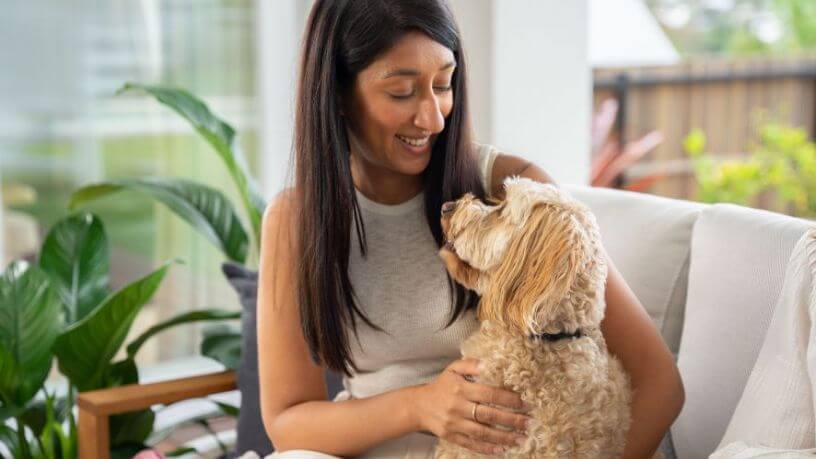
Rule-2_Positive-Reinforcement-Works-Best
Positive reinforcement makes training sessions effective and enjoyable. I focus on rewarding behaviors I want to see again, directly associating good actions with positive outcomes.
Treats And Rewards
I use treats and rewards that motivate my dog. For example, soft chicken bites, small cheese pieces, or commercial training treats encourage enthusiasm during training. Treats work best when delivered instantly, right after the desired behavior, so the connection remains clear. I avoid treats my dog dislikes, since negative associations reduce progress.
Common Training Treat Types and Uses
| Treat Type | Best For | Example Brands/Items |
|---|---|---|
| Soft, small treats | Basic obedience | Zuke’s Mini Naturals |
| High-value (meat) | Recall, new tricks | Boiled chicken, liver |
| Crunchy biscuits | End-of-session reward | Blue Buffalo Bits |
Praise And Encouragement
I supplement treats with enthusiastic praise and genuine affection. I verbally celebrate my dog’s success (“Good job,” “Yes!”), accompanied by petting or cheerful tones. Consistent, immediate praise increases motivation and confidence, especially during challenging exercises. Encouraging small successes in every session builds progress steadily.
| Praise Type | When Used | Example Phrases |
|---|---|---|
| Verbal praise | On correct behavior | “Great!”, “Well done!” |
| Petting/affection | With verbal praise | Belly rubs, head pats |
| Excited tones | During new behaviors | Cheerful “Yes!” |
Rule 3: Patience and Persistence
Progress in dog training depends on steady patience and unwavering persistence. I stay focused on small wins and make calm repetition part of every session.
Managing Expectations
I recognize that every dog learns at a unique pace and in its own way. Training always includes moments of slow progress or setbacks. I highlight and reward each step forward, even if it’s minor, so my dog stays engaged and motivated.
Typical Training Progress Timelines
| Training Task | Average Time to Learn | Progress Signs |
|---|---|---|
| Sit command | 1–2 weeks | Dog responds to cue, even with distractions |
| Recall (come) | 2–4 weeks | Dog returns consistently when called |
| Loose leash walking | 3–6 weeks | Dog walks calmly alongside without pulling |
| Socialization | 2–3 months | Dog remains calm around new people and animals |
I keep these timeframes in mind when I structure training plans and celebrate incremental improvements.
Handling Setbacks
Training rarely moves in a straight line. I calmly pause sessions when my dog or I get frustrated, then later resume with a fresh perspective. I use new methods if a standard approach stalls, always paired with positive reinforcement and consistent cues.
Strategies for Overcoming Training Challenges
| Strategy | Practical Example |
|---|---|
| Take short breaks during frustration | Pause for 5 minutes and restart |
| Try alternative teaching techniques | Use toys instead of treats for motivation |
| Emphasize and reward good behaviors | Extra praise when calm amid distractions |
| Maintain consistent commands and signals | Use same word and gesture for “down” |
| Consult a professional when needed | Schedule session with certified trainer |
My persistence in reinforcing positive behaviors, matched with patience during setbacks, creates a resilient, confident, well-mannered dog.
Rule 4: Clear Communication
Clear communication drives effective training and strengthens my connection with my dog. Consistent body language, tone, and commands eliminate confusion during every interaction.
Body Language and Tone
Body language and tone guide my dog’s understanding in daily training. Dogs mainly interpret posture, gestures, and voice tone—not just words. I maintain a confident, calm stance and use clear, deliberate hand signals for commands like “sit” or “stay.” My voice stays neutral and steady, especially when delivering praise or corrections. Applying this unified approach amplifies the effect of verbal cues and gives my dog instant feedback.
Body Language and Tone Examples Table
| Training Cue | Body Language Example | Tone Example |
|---|---|---|
| Sit | Upright posture, palm down | Calm, assertive voice |
| Stay | Hand up, slight step back | Firm, steady tone |
| Come | Open arms, crouch slightly | Inviting, upbeat |
| Down | Lower hand to ground | Slow, gentle voice |
Avoiding Mixed Signals
Avoiding mixed signals means I communicate consistently and predictably every time. If multiple family members train my dog, we all use identical commands, gestures, and tones. Contradictory cues—like saying “down” for both lying down and getting off furniture—confuse my dog and slow progress. I clarify each command’s meaning and agree with my household on the exact words and motions.
Common Mixed Signals and Solutions Table
| Problem Signal | Example | Solution |
|---|---|---|
| Conflicting Commands | “Off” for both sofa and jumping on people | Assign unique cue to each behavior |
| Contradictory Gestures | Pointing for “come” and “stay” | Use distinct hand signal for each action |
| Tone Inconsistency | Excited tone for both praise and recall | Reserve upbeat tone for recall only |
| Command Variation | “Down” vs. “Lie down” by different members | Standardize phrasing among all handlers |
Unifying communication keeps my dog focused, confident, and responsive, maximizing the results of each training session.
Rule 5: Training Should Be Fun
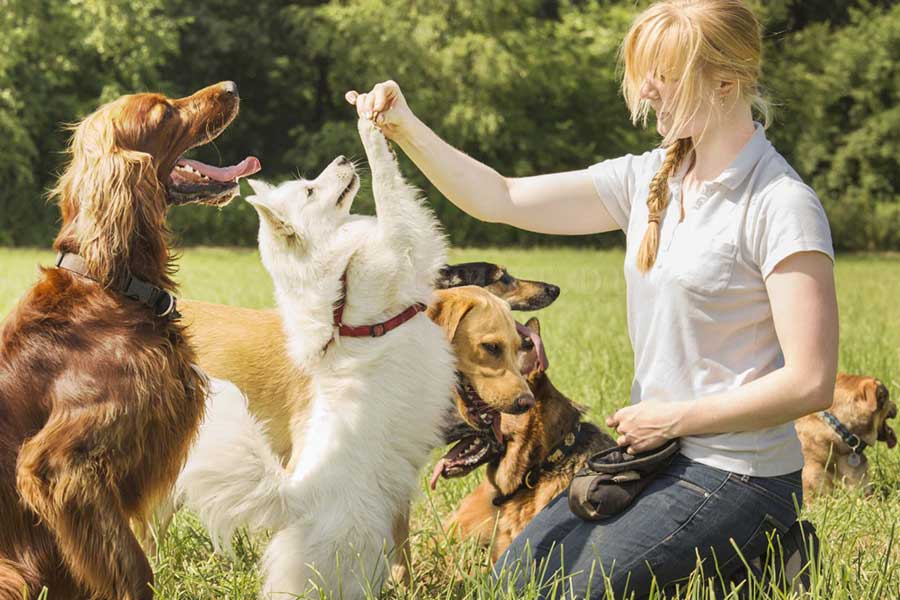
Rule5_Training-Shoul-Be-Fun
Keeping training fun transforms sessions into enjoyable experiences for both me and my dog. Playful, upbeat environments build confidence and drive stronger, long-lasting results.
Incorporating Playtime
Integrating playtime into each session captures my dog’s focus and enthusiasm. I use toys, fetch, or tug-of-war as rewards between repetitions. Games like hide-and-seek or recall relays prevent boredom and boost motivation.
Examples of Play-Based Training Activities
| Training Activity | Description | Benefit |
|---|---|---|
| Fetch with Commands | Fetch paired with “sit”/”drop it” | Combines obedience with excitement |
| Tug-of-War Breaks | Short tug session after correct cue | Reinforces success through interaction |
| Hide-and-Seek | Hiding and calling dog by name | Encourages recall in a playful way |
| Training with Toys | Tasks performed for favorite toy | Maximizes engagement using play |
Building a Strong Bond
Fun training strengthens my relationship with my dog by fostering trust and positive associations. Consistent smiles, gentle praise, and relaxed posture during sessions create an inviting atmosphere. Varying locations, routines, and rewards, like a belly rub after a perfect recall, maintains my dog’s interest and enjoyment.
Reward Types for Motivating Dogs
| Reward Type | Example | Effect on Engagement |
|---|---|---|
| Food Treats | Small chicken bites, cheese | Fast reward, high motivation |
| Praise | Verbal encouragement, petting | Emotional connection, bonding |
| Physical Play | Tug-of-war, chase, ball games | High excitement, sustained focus |
Training that feels like play helps my dog associate learning with joy. A positive atmosphere ensures my dog remains relaxed, focused, and eager to participate.
Conclusion
Dog training isn’t just about commands—it’s about building a partnership based on trust, respect, and understanding. When I stick to the golden rules, I see my dog flourish and our relationship grow stronger every day.
Staying dedicated to these principles brings out the best in both of us. The journey may have its ups and downs but the rewards of a well-trained and happy dog make every effort worthwhile.
Frequently Asked Questions
Why is dog training important?
Dog training is crucial because it shapes your dog’s behavior, strengthens your bond, and builds trust. Well-trained dogs are more confident, less anxious, and better at responding to commands, making daily life smoother and safer for both pet and owner.
What is the main benefit of using positive reinforcement in dog training?
Positive reinforcement encourages good behavior by rewarding your dog with treats, praise, or affection. This method makes training enjoyable and motivates your dog to repeat desired actions, leading to faster learning and a happier, more confident pet.
How does consistency help in dog training?
Consistency in daily routines, commands, and cues helps your dog understand what is expected, reducing confusion and anxiety. When all family members use the same words and rules, your dog learns behaviors more quickly and reliably.
What should I do if my dog isn’t making progress?
Stay patient and persistent. Every dog learns at its own pace, and setbacks are normal. If progress stalls, try shorter sessions, more motivating rewards, and seek advice from a professional trainer if needed. Celebrate small improvements to keep training positive.
Why is clear communication important in dog training?
Dogs respond best to clear, consistent signals—both verbal and physical. Using the same words, tone, and body language avoids confusion, helping your dog focus and learn commands more effectively.
How can I make training fun for my dog?
Incorporate play, games, and positive energy into your sessions. Using toys, fetch, and rewards creates an enjoyable atmosphere, ensuring your dog stays engaged and eager to participate, which accelerates learning and strengthens your bond.
When should I start training my dog?
Start training as early as possible, ideally when your dog is a puppy. However, it’s never too late—adult dogs can also learn new behaviors with consistent, positive methods.
How long should training sessions last?
Keep sessions short and focused—usually 5 to 15 minutes, depending on your dog’s age and attention span. Frequent, brief sessions are more effective than occasional, long ones.
What are the 5 Golden Rules of Dog Training?
The 5 Golden Rules are: be consistent, use positive reinforcement, stay patient and persistent, communicate clearly, and make training fun. Following these principles leads to lasting, positive behavior changes and a stronger bond with your dog.
Will training help my dog with socialization?
Yes, training exposes your dog to new environments, people, and animals, reducing fear and anxiety in unfamiliar situations. This improves temperament and helps your dog adapt to everyday life more comfortably.

